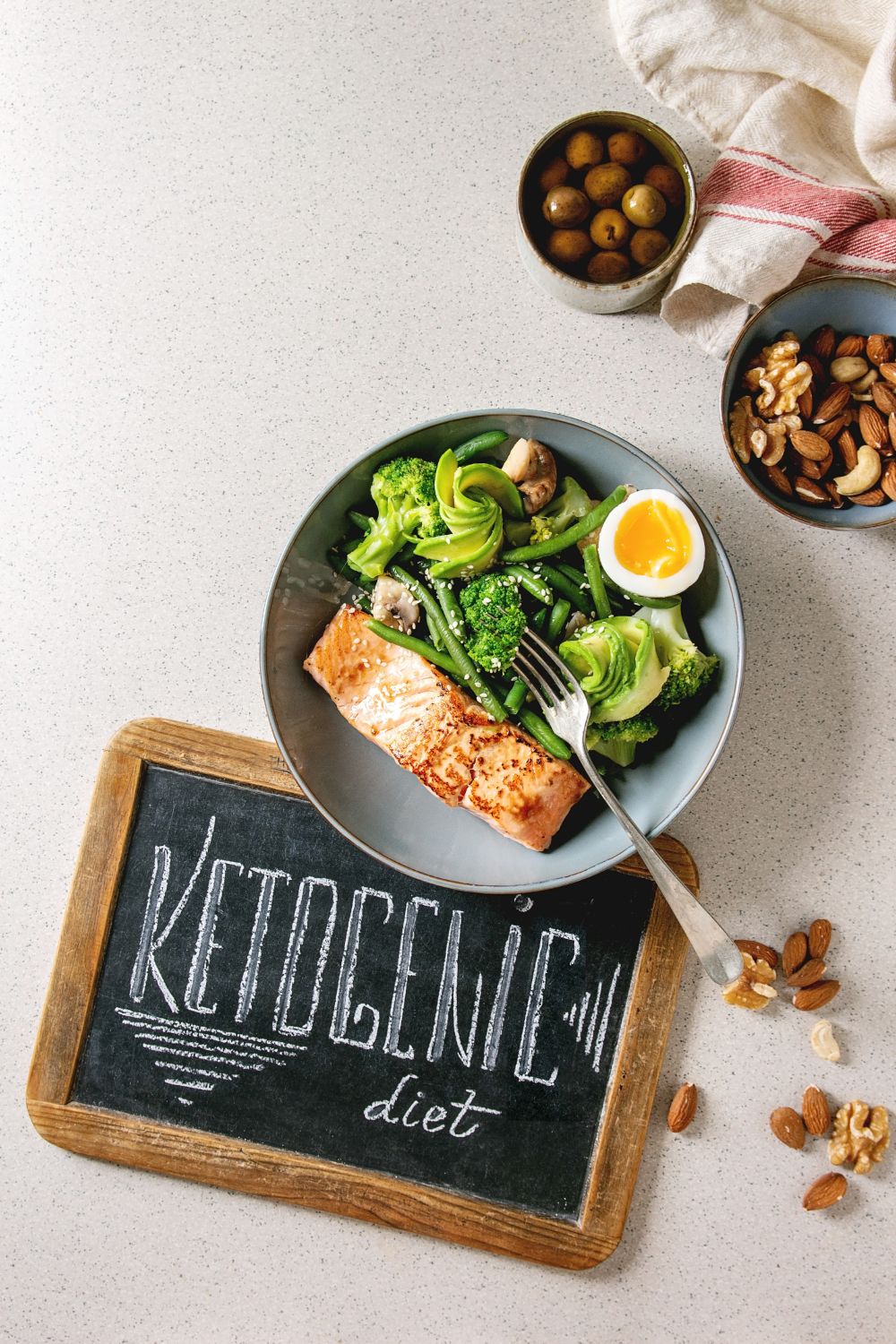Ketogenic
Breaking Down the Ketogenic Diet
So you’ve heard people raving about the ketogenic diet and you’re wondering what all the fuss is about.
Fair enough.
Let me walk you through this whole keto thing without the usual health guru nonsense or overcomplicated science.
The ketogenic diet is a high-fat diet that flips your body’s energy system on its head.
Instead of burning glucose from carbohydrates like your body normally does, you’re teaching it to burn fat for fuel by entering a metabolic state called ketosis.
Think of it as switching your body from running on regular unleaded to premium jet fuel.
What Actually Happens When You Go Keto?
Here’s the deal with carbohydrate restriction: when you dramatically cut carbs (usually down to 20-50 grams per day), your body runs out of glucose to burn for energy.
After a few days of mild panic, your liver starts breaking down fat into something called ketone bodies. These ketones become your new primary energy source.
This process is called nutritional ketosis, and it’s completely different from ketoacidosis, which is a dangerous condition that can happen with uncontrolled diabetes.
Don’t confuse the two.
Your macronutrients on a ketogenic diet typically break down to roughly 70-80% fats, 15-25% protein, and 5-10% carbohydrates.
That’s a massive shift from the standard American diet where carbs make up 45-65% of calories.

How Does the Ketogenic Diet Compare to Other Low-Carb Approaches?
Let’s clear up some confusion. The Atkins diet and ketogenic diet are cousins, but not twins.
Dr. Robert Atkins popularized low-carb eating decades ago with his induction phase that’s similar to keto, but Atkins eventually allows more carbs as you progress.
The paleo diet focuses on eating like our ancestors, emphasizing whole foods and eliminating processed junk, grains, and dairy.
While many paleo followers eat low-carb, it’s not specifically designed to trigger ketosis like a ketogenic diet is.
Other variations like the carnivore diet (all animal products), Banting diet, Dukan diet, and South Beach diet share some similarities with keto but have different rules and goals.
The Zone diet and low glycemic diet focus on balancing macronutrients and controlling blood sugar levels rather than achieving ketosis.
If your goal is reaching and maintaining ketosis, the ketogenic diet is your most direct path.
What Are the Real Benefits People Experience?
Weight loss is usually what gets people interested, and yeah, keto can be effective for dropping pounds.
When your body becomes fat adapted (meaning it’s efficient at burning fat for fuel), you’re essentially turning yourself into a fat-burning machine through increased lipolysis and fatty acids being used for energy.
But there’s more to it than just the number on the scale.
Many people report better mental clarity, stable energy levels throughout the day (no more 3pm crashes), and improved glucose control.
For folks dealing with insulin resistance, metabolic syndrome, type 2 diabetes, or prediabetes, a ketogenic diet can help improve insulin sensitivity and manage blood sugar levels naturally.
Some research suggests benefits for polycystic ovary syndrome (PCOS), reducing inflammation, and supporting overall metabolic health.
The science is still evolving, but the results many people experience are pretty compelling.
Can You Combine the Ketogenic Diet with Intermittent Fasting?
Absolutely, and many people do. Intermittent fasting involves cycling between periods of eating and fasting.
Popular approaches include time-restricted eating with a fasting window (like the 16/8 method where you eat within an 8-hour window), or the 5:2 diet where you eat normally five days and restrict calories two days.
When you combine intermittent fasting with a ketogenic diet, you’re potentially amplifying some benefits like autophagy (your body’s cellular cleanup process), hormone regulation, and fat burning.
Both strategies promote metabolic flexibility and can create a calorie deficit without feeling like you’re constantly starving.
Just start slowly. Adding intermittent fasting to an already restrictive ketogenic diet can be intense if you’re new to either approach.

What’s This Keto Flu Everyone Complains About?
Right, let’s talk about the not-so-fun part.
During the first week or so of carbohydrate withdrawal, many people experience what’s called keto flu.
Symptoms can include headaches, fatigue, irritability, brain fog, muscle cramps, and general crankiness.
This happens because your body is adapting to burning ketones instead of glucose, and you’re losing water and electrolytes as your body depletes its glycogen stores. The keto adaptation period typically lasts a few days to a couple weeks.
You can minimize the effects of the keto flu by staying hydrated, increasing your salt intake, making sure you’re getting enough potassium and magnesium, and don’t push yourself too hard with exercise during the transition.
The electrolyte imbalance is usually the main culprit behind feeling lousy. When I first started, Re-Lyte Unflavored Hydration Mix was my best friend. I still take it when I feel like I haven’t eaten enough salt or over exercise.
Do You Need Special Supplements or Exogenous Ketones?
Here’s my take: you don’t need fancy supplements to do a ketogenic diet successfully. Exogenous ketones (ketone supplements you drink) can raise your ketone levels temporarily, but they won’t magically put you in ketosis if you’re still eating carbs.
That said, some people find value in MCT oil or coconut oil, which contain medium-chain triglycerides (specifically caprylic acid and capric acid) that your body quickly converts to ketones. They can give you a mental boost and help with brain health.
More important than ketone supplements are the basics: quality whole foods, plenty of healthy fats, adequate protein, and those electrolytes we talked about. Focus your money on good nutrition rather than expensive powders and potions.
How Do You Actually Know You’re in Ketosis?
Your body produces three types of ketone bodies: acetoacetate, beta-hydroxybutyrate, and acetone.
You can measure ketones in your blood, breath, or urine to confirm you’re in ketosis, but honestly, most people can tell by how they feel.
Signs you’ve achieved nutritional ketosis include steady energy without crashes, reduced hunger and cravings, mental clarity, and yes, sometimes a slightly fruity or metallic smell to your breath (that’s the acetone).
Your ketone levels will fluctuate throughout the day based on your eating patterns, exercise, and metabolism.
Don’t obsess over perfect ketone measurements. Focus on how you feel and whether you’re seeing the results you want.
What About Meal Planning and Staying Consistent?
Success with a ketogenic diet comes down to proper meal planning and understanding portion control. When I started, I cleaned out my pantry and got rid of anything that might tempt me.
Stock your kitchen with keto-friendly foods: fatty fish, meat, eggs, low-carb vegetables, nuts, seeds, avocados, olive oil, butter, and full-fat dairy if you tolerate it.
Track your macronutrients initially until you get a feel for what your meals should look like. Apps can help, but eventually you’ll develop an intuition for building balanced keto meals.
The biggest challenge isn’t the food itself. It’s maintaining consistency when you’re at social events, traveling, or just tired and tempted by convenient carbs.
Plan ahead, keep keto snacks handy, and remember that exercise and general nutrition principles still matter even when you’re restricting carbohydrates.

Understanding the Risks and Considerations
Let’s be honest about potential downsides.
A ketogenic diet isn’t for everyone.
If you have type 1 diabetes, you need to work closely with your doctor because there’s a risk of diabetic ketoacidosis.
Pregnant or nursing women, anyone with liver or kidney issues, or people with certain metabolic conditions should get medical clearance first.
Some people struggle with the restrictiveness. You’re eliminating or severely limiting a major food group, which means missing out on dietary fiber from grains and certain vitamins and minerals from fruits.
You might need to supplement or be very strategic about getting micronutrients from the foods you can eat.
Watch for signs of dehydration, especially early on. And understand that everyone’s basal metabolic rate and energy metabolism are different.
What works amazingly for your friend might not work the same way for you.
Is the Ketogenic Diet Right for Your Goals?
Here’s what matters most: your individual health goals, lifestyle, and how you actually feel on the diet.
If you’re dealing with obesity, metabolic syndrome, high blood sugar, or type 2 diabetes, a ketogenic diet might offer real benefits worth exploring with your healthcare provider.
If you’re generally healthy and just looking to optimize your body composition, energy expenditure, or athletic performance, keto could work, but it’s not the only path.
Some people thrive on moderate-carb approaches, high-protein diets, or different eating patterns entirely.
The ketogenic diet works because it addresses glucose metabolism, promotes insulin sensitivity, reduces glucose intolerance, and can help manage hyperinsulinemia through consistent carbohydrate restriction. But these benefits come with tradeoffs that you need to honestly assess.
Pay attention to your body. Monitor your energy levels, mood, body mass index changes, and how you feel about food. A sustainable approach beats a perfect-on-paper plan that you hate following.
Getting Started with the Ketogenic Diet
If you’ve decided to try a ketogenic diet, start with a clear macronutrient ratio goal, clean out the high-carb temptations from your kitchen, and educate yourself about which foods fit your new high-fat diet pattern.
Understanding gluconeogenesis (how your body makes glucose from protein) and the role of glucagon and insulin in fat metabolism will help you make smarter choices.
Give yourself at least 4-6 weeks before judging whether the ketogenic diet is working for you. That’s enough time to get through keto flu, achieve proper keto adaptation, and start seeing real changes in your energy metabolism and how your body uses ketones as an energy source.
Track not just weight but how you feel, your mental clarity, energy levels throughout the day, and any improvements in health markers like blood sugar, inflammation markers, or metabolic health indicators. These often tell a more complete story than the scale alone.
The ketogenic diet represents a significant shift in how you fuel your body, moving from glucose dependence to fat burning through intentional carbohydrate restriction and entering a metabolic state of ketosis.
Whether it’s right for you depends on your health goals, medical history, and commitment to this particular eating pattern.
FAQs
What is ketosis and how long does it take to reach it?
Ketosis is a metabolic state where your body burns ketones from fat instead of glucose from carbs. Most people reach ketosis within 2-4 days of eating fewer than 50 grams of carbs daily.
Can I exercise while on a ketogenic diet?
Yes, but expect a performance dip during the first few weeks as your body adapts. Once you’re fat adapted (usually 4-6 weeks), most people find their energy and exercise capacity returns or even improves.
What’s the difference between nutritional ketosis and ketoacidosis?
Nutritional ketosis is a safe metabolic state with moderate ketone levels. Ketoacidosis is a dangerous condition with extremely high ketones and acidosis, typically only occurring in people with uncontrolled type 1 diabetes.
Do I have to count calories on the ketogenic diet?
Not necessarily. Many people naturally eat fewer calories because fat and protein are more satiating. However, calorie deficit still matters for weight loss, so some tracking can be helpful if you’re not seeing results.
What should I eat to avoid keto flu?
Focus on hydration and electrolytes. Add extra salt to your food, eat potassium-rich foods like avocados and spinach, and consider a magnesium supplement. Bone broth can help too.
Can vegetarians or vegans do a ketogenic diet?
Yes, though it’s more challenging. Plant-based keto relies heavily on nuts, seeds, avocados, coconut oil, and low-carb vegetables while using plant proteins like tofu and tempeh instead of animal products.























































